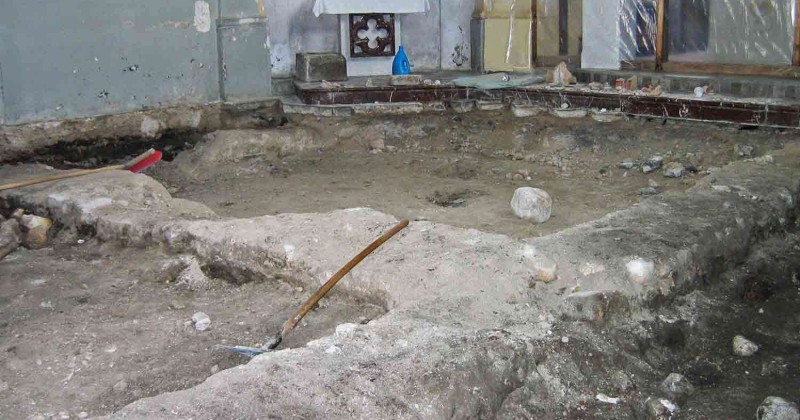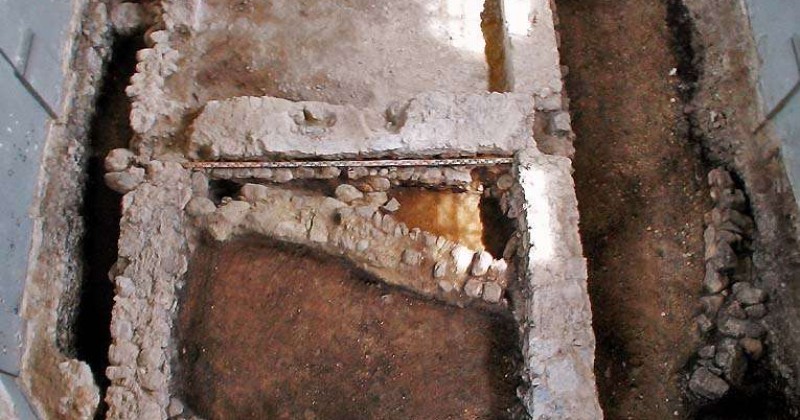Archaeological remains of Villa Rustica
Archaeological research in the church of St. Margaret.
The Church of St. Margaret stands right next to the old road towards Bohinj, on the easternmost edge of Bohinjska Bela. On the northern side the overhanging cliffs of Osojnica rise above the church, while to the south and east, the terrain slopes down towards the Belca stream and the Sava Bohinjka River.
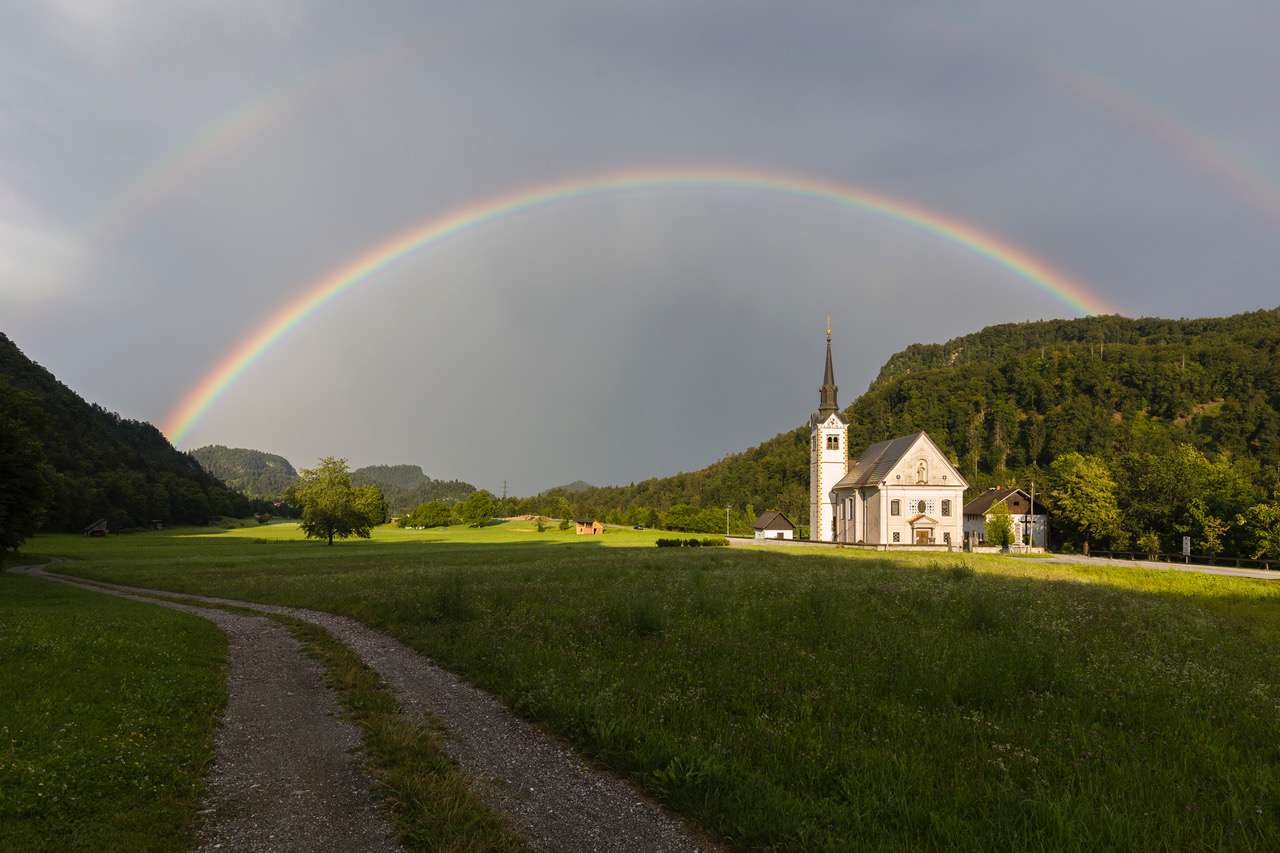
Noticing that the nave of the church was infested with wood-decay fungus, the Bohinjska Bela parish began restoration works in 2006. Since the situation called for a removal of the flooring in the church nave, the Kranj unit of the Institute for the Protection of Cultural Heritage mandated archaeological supervision. Archaeological cultural layers were identified, prompting the supervision to evolve into full-scale archaeological research and excavations.
 Foto: Marija Ogrin
Foto: Marija Ogrin
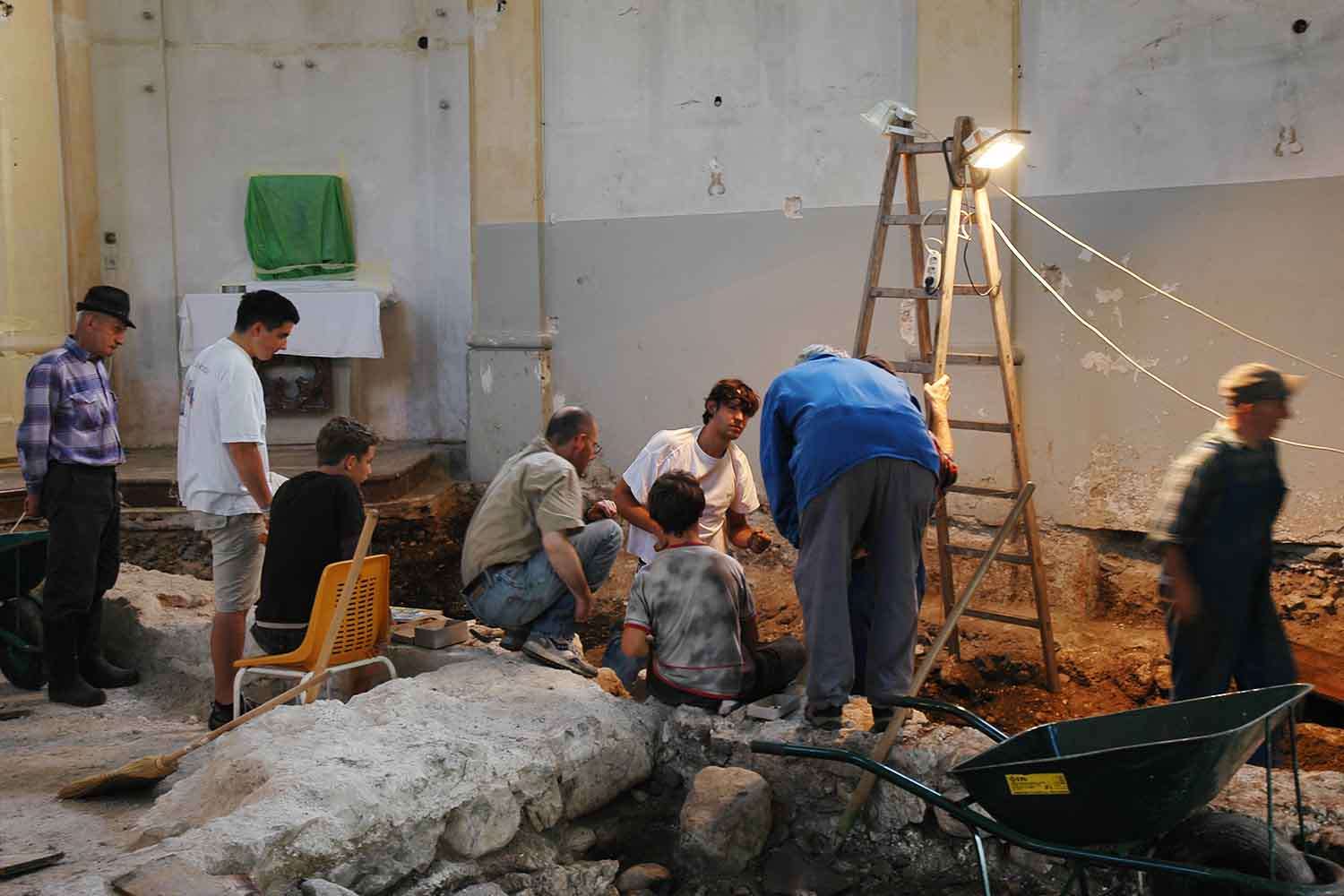
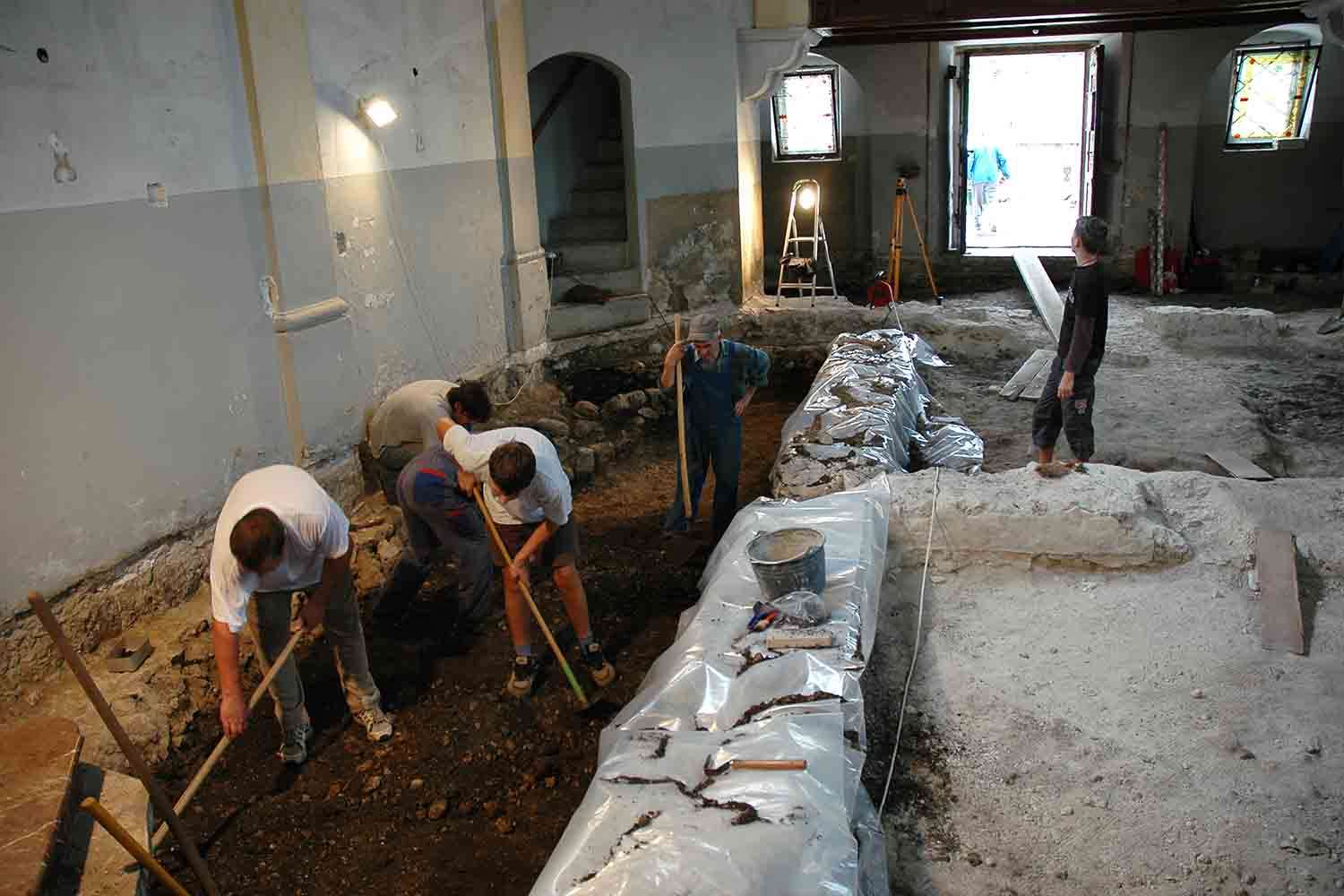 Foto: Judita Lux
Foto: Judita Lux
The Church of St. Margaret in Bohinjska Bela is first mentioned in 1253 in the Bled land register. However, no traces of the medieval predecessor, which is also mentioned in 16th and 17th-century visitation records, were found on the façades of the existing Baroque architecture. As part of the restoration work addressing the wood-decaying fungus, plaster on the interior walls of the nave was partially removed. Preliminary probing of the whitewash and plaster near the floor was conducted, as medieval walls are often hidden beneath Baroque overlays. The probes yielded negative results, allowing for the definitive conclusion that the Baroque nave was entirely rebuilt in the mid-18th century and consecrated in 1754. However, a greater surprise was hidden beneath the stone flooring. After removing the fill, walls with foundations of an older structure emerged. These walls run parallel to the walls of the current church and are situated in the center of the present nave.
 Foto: Jože Hanc
Foto: Jože Hanc
The excavations unearthed fragments of late antique ribbed vessels and amphorae, probably dated between the 4th and 6th centuries AD. These were found in a clay-like layer between the southern wall of the current church and the southern wall of the Gothic church. Additionally, a small number of fragments of late antique vessels and a bronze coin, dated to the second half of the 4th century and the beginning of the 5th century AD, were found in a waste pit partially destroyed by the foundation of the western wall of the church.
The remains of the late antique cultural layer, together with the masonry structure, the early mention of the church with its old patronage, and the preserved remnants of the medieval Gothic predecessor, demonstrate the continuity of settlement in the sacred space of Bohinjska Bela. The Church of St. Margaret thus belongs to a series of sacred monuments built on late antique villae rusticae. Examples include the Church of St. Catherine in Srednja vas near Šenčur, still featuring the remains of a Romanesque predecessor in its nave, or St. Nicholas in Spodnje Bitnje, alongside its Romanesque counterpart, St. Vitus, located nearby.
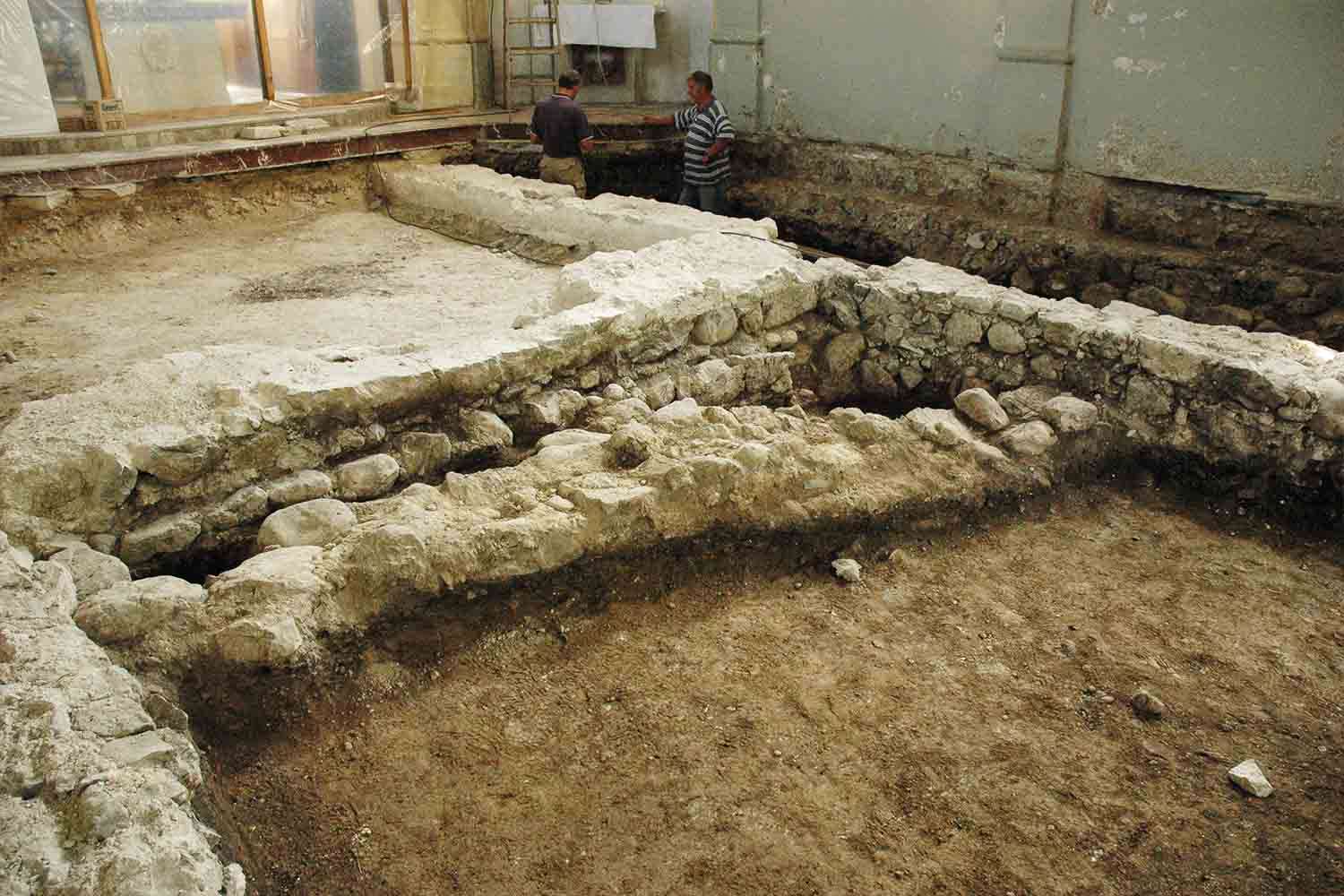 Foto: Judita Lux
Foto: Judita Lux
The discovered fragments of plaster and stone decorations suggest that the Gothic predecessor of St. Margaret was smaller in size but richly adorned, featuring not only ribbed vaulting but also frescoes of exceptional quality, particularly notable in the Bled part of the Gorenjska region (e.g., Mevkuž, Bled Island, Bodešče, and Ribno).
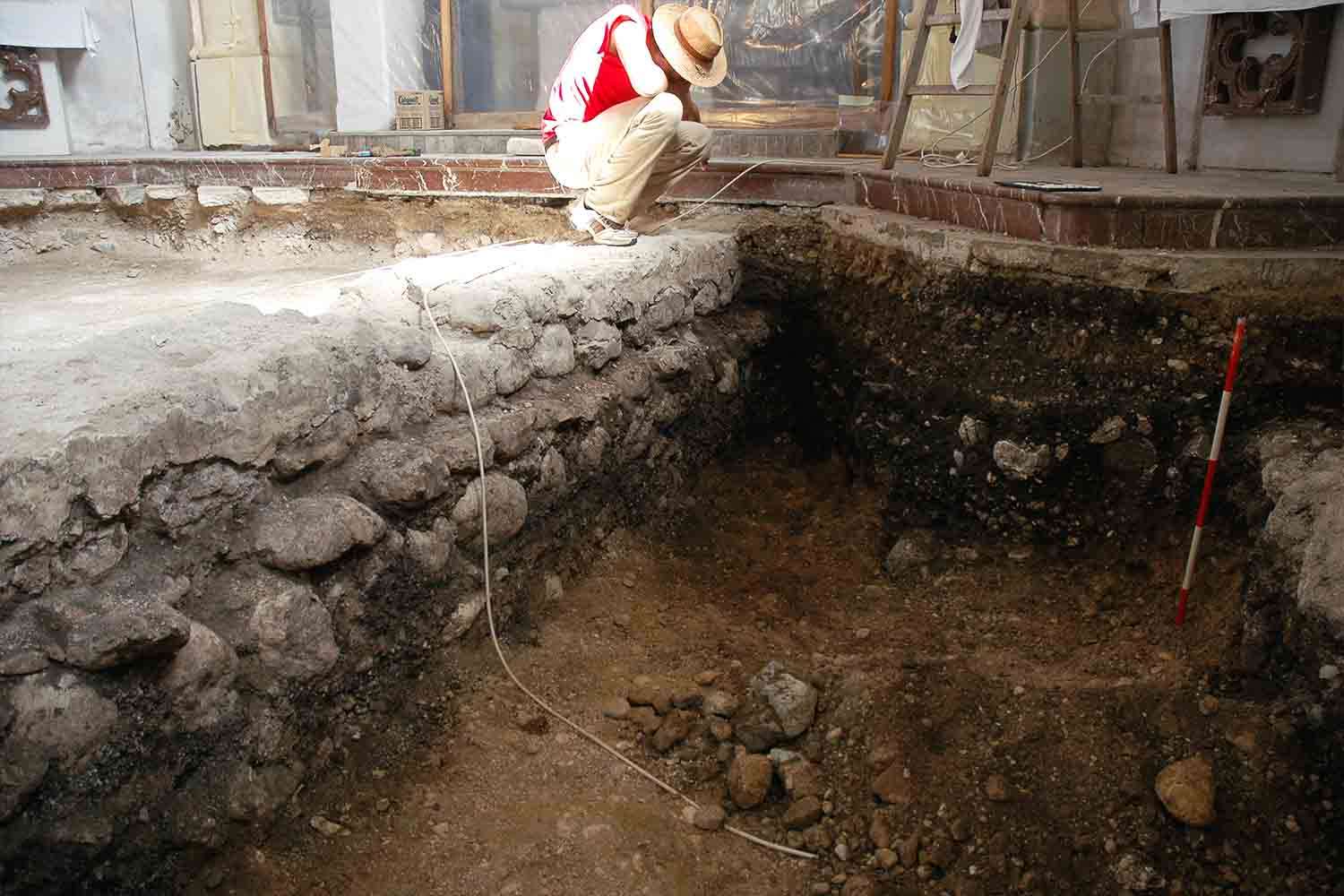 Foto: Judita Lux
Foto: Judita Lux
The authors: Nika LEBEN in Judita LUX


